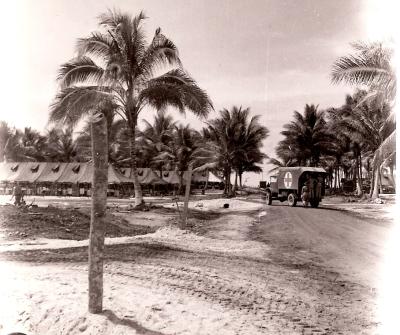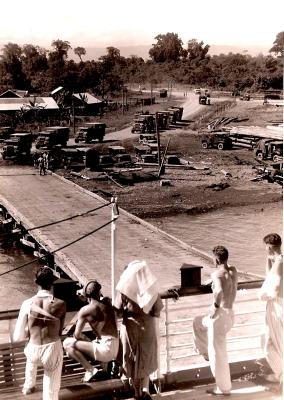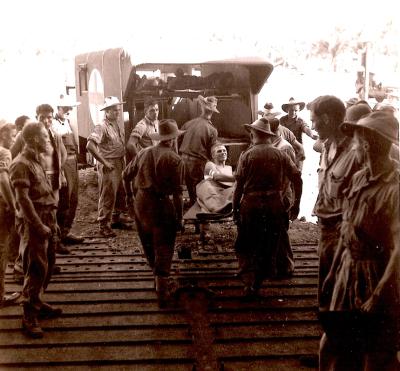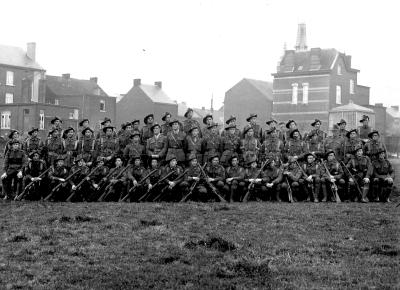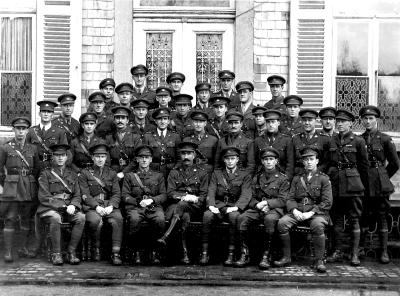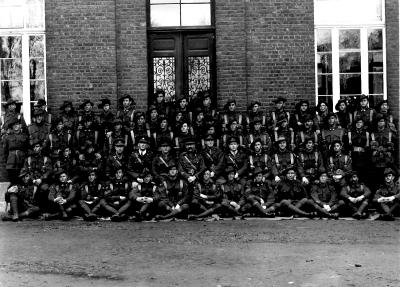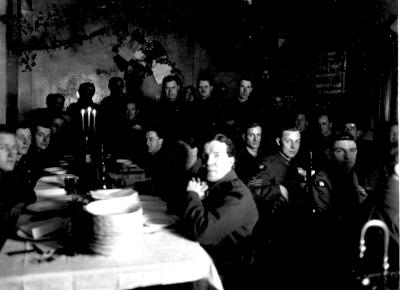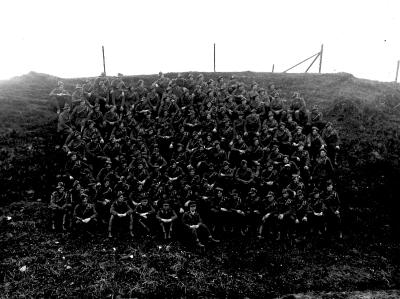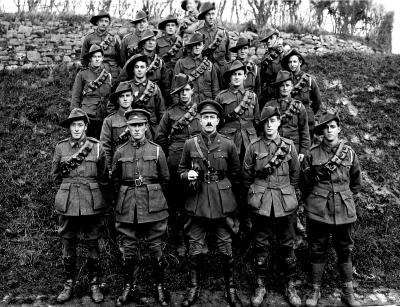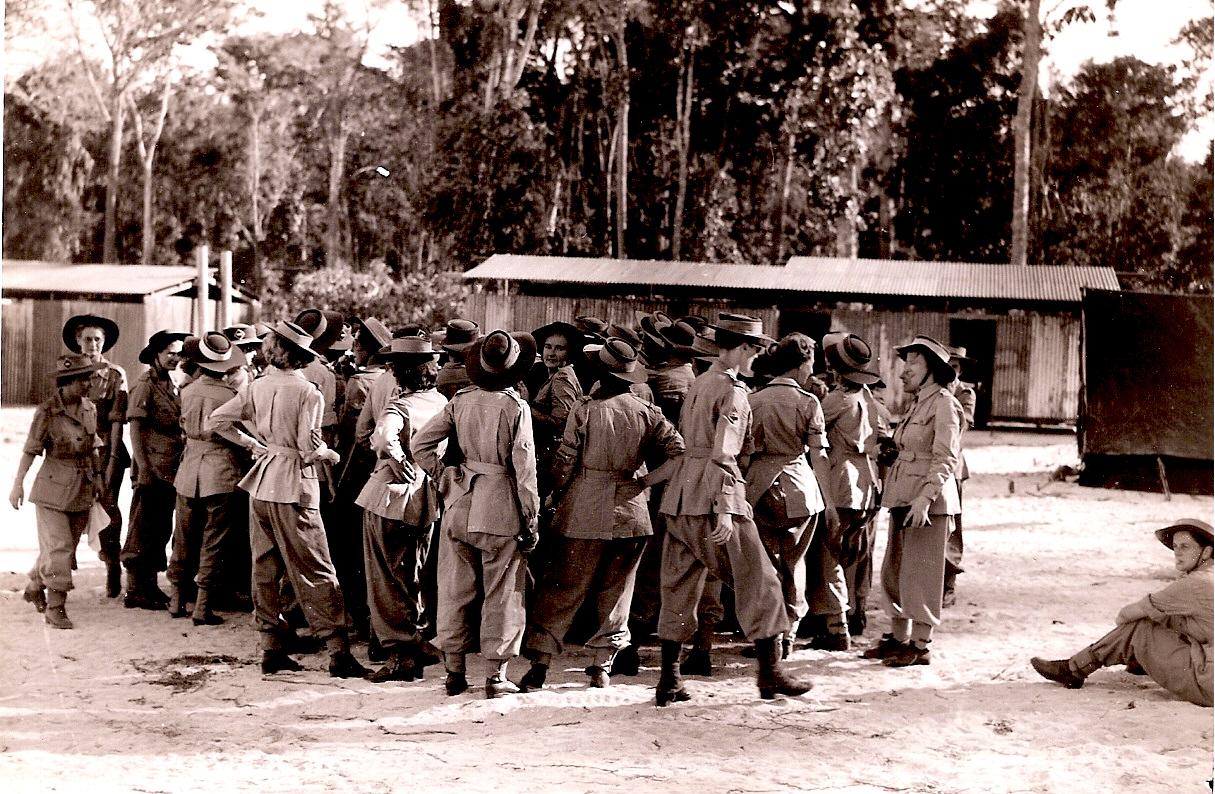World War 2, Indonesia Morotai, 2/5 Australian General Hospital, Australian Army Medical Women’s Service, 1945
1945Australian Army Medical Women’s Service of 2/5 Australian General Hospital collecting mail on arrival on Morotai
The Australian Army Medical Women’s Service (AAMWS) grew out of the volunteer Red Cross and St John Ambulance Voluntary Aid Detachments (known as the VADs). From December 1942 nearly 8,500 AAMWS served as nurses, nursing aides, and technicians tending sick and wounded soldiers in the Middle East, New Guinea, and Australia. The AAMWS served alongside army nursing sisters in hospitals..
The Australian Women's Army Service (AWAS) was authorised by the government on 13 August 1941 to "release men from certain military duties for employment in fighting units." The AWAS was the only non-medical women's service to send personnel overseas during the war; in 1944 and 1945 AWAS served in both Dutch and Australian New Guinea. By 30 June 1947 all members of the AWAS had been demobilised
Facing a severe manpower shortage due to the demands of the Korean War and national service in a time of full employment, enlistment for the Women's Royal Australian Army Corps (WRAAC) began in April 1951. In the late 1970s female soldiers began to be integrated into the Army at large and in early 1984, the WRAAC was disbanded.
Details
Details
The 2/5 Australian General Hospital was the fifth hospital raised by the Australian Army in the Second World War (1939 - 1945). It was formed in May - June 1940, to be a completely self contained hospital of about 1200 beds, fully equipped with operating theatres, wards, staff quarters and all ancillary items, together with tents to house them. Although classified as 'Corps Troops', as casualities increased, sections of the Unit were seconded to serve with the 6th and the 7th Division Forces.
The main body sailed on 20 October 1940, on board the Queen Mary and other ships in convoy for Bombay, where they were transhipped to Palestine. On 9 April 1941, the 2/5 AGH left Palestine for Greece, As the military situation deteriorated and it became obvious that Greece could not be held, all the female and many of the male staff were evacuated back to Palestine, leaving 165 (including six doctors ) to look after the patients who could not be evacuated. On 27 April 1941, all these people became Prisoners of War.
As the war progressed, the hospital, helped by some members of the 2/7 Australian Field Ambulance, 1st New Zealand General Hospital and the 26th British Hospital, treated all the sick and wounded from the remaining battles of Greece and Crete. In December 1941, the hospital was closed and the remaining patients and staff went to Europe, most of them to Poland. In October 1943, 128 of the 2/5 AGH were repatriated home, leaving 36 still in Europe.
In the meantime, those who had been evacuated to the Middle East, had reformed and been reinforced with new personnel and new equipment. In September 1941, they were again operating, this time in Eritrea and in Ethiopia. When Japan entered the war the 2/5 AGH redeployed back to Australia in March 1942.
In December 1942 they headed to Bootless Bay, in New Guinea. For the first time the nursing was for tropical diseases such as malaria, scrub typhus, blackwater fever, severe dysentery and many others. Each tent accommodated 80 patients, cared for by two sisters and about six orderlies. At one time the bed state was over 1500 - in a hospital designed for 1200, as wounded and sick arrived from the Kokoda Track, Buna and other places in New Guinea. The bed state rose to over 2000 by Christmas Day 1943.
The year 1943 saw two very welcome happenings: Firstly, that year the newly created Australian Army Medical Women’s Service (AAMWS) sent reinforcements to replace some of the male nursing orderlies and other support staff who had done such sterling work up to that time. Secondly, Penicillin was used for the first time.
It was here that the 2/5 AGH, for the first time, treated ex-POWs - some Indian troops released from the Japanese on nearby islands. As the major battles of New Guinea had been fought by the end of 1944, the 2/5 returned to Australia, this time to be re-equipped for its final posting. In April 1945, the 2/5 AGH was sent to Morotai which was still partly occupied by the Japanese.
By Anzac Day, there were 589 beds equipped with 386 occupied. The dysentery ward had 60 beds and the skin ward had 180. On 10 May the bed state was 1116 and by June it was 1500. In July there were about 100 Japanese prisoners of war among the patients. Malaria was still rampant, but fortunately, scrub typhus was no longer a problem.
The 2/5 AGH ceased to function in November 1945, exactly five years after the main body had sailed on the Queen Mary from Sydney for the Middle East. During the period 1939 - 1945, over 1300 personnel served with the Unit, which consisted of 173 male officers (this included Doctors etc), 500 women (Nurses - AANS and Nurses Aides - AAMWS) and 630 other ranked males (including 167 taken as prisoners of war). Probably in excess of 15,000 patients were treated
Open in Google Maps
Nearest geotagged records:
Australian Army Museum of Western Australia
Australian Army Museum of Western Australia
Other items from Australian Army Museum of Western Australia
- World War 2, Indonesia Morotai, Australian Army Medical Women’s Service, 1945
- World War 2, Indonesia Morotai, Australian Army Medical Women’s Service, 1945
- World War 2, South-West Pacific Theatre, Morotai, 1945
- World War 2, South-West Pacific Theatre, Morotai, 1945
- World War 2,South-West Pacific Theatre, Morotai, LST 1025, LST 617, 1945
- World War 1, Europe, 27 Battalion, 1918
- World War 1, Europe, 27 Battalion, 1918
- World War 1, Europe, 27 Battalion, 1918
- World War 1, Europe, Western Front, 1 Division AIF, GLASGOW, 1918
- World War 1, Europe, 1918
- World War 1, Europe, Australian Field Artillery, 1918
- World War 1, Europe, 1918
